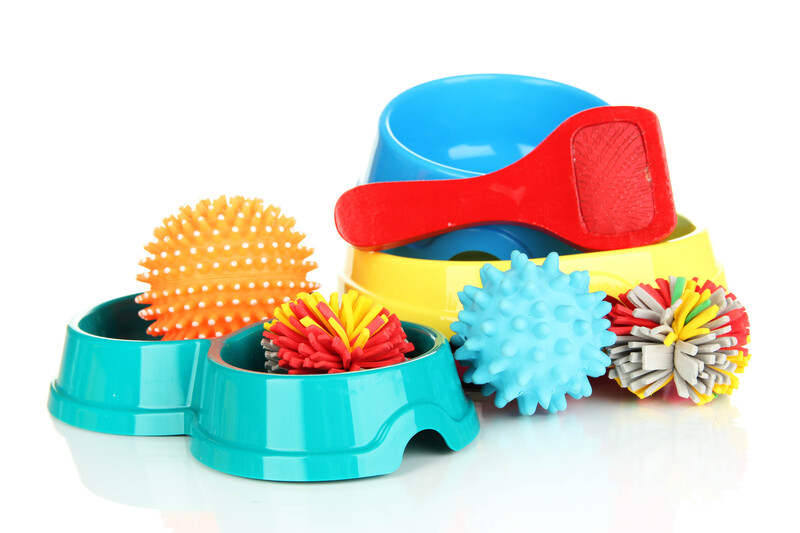Efficient Strategies for Packing When Moving to a New Home
Posted on 22/06/2025
Efficient Strategies for Packing When Moving to a New Home
Relocating to a new home is a major milestone, full of excitement and new beginnings. However, packing for a move can feel overwhelming if you're not well prepared or organized. The key to a successful move starts with implementing efficient packing strategies that save you time, money, and stress. In this comprehensive guide, we delve into expert techniques and actionable tips for packing when moving to a new home efficiently and effectively.
Why Efficient Packing Is Essential for a Smooth Move
Before diving into packing for relocation, it's crucial to understand why efficient techniques matter. Properly organized packing:
- Prevents last-minute chaos
- Reduces the risk of broken or lost items
- Streamlines the unpacking process
- Saves money on packing materials and moving costs
- Minimizes stress and increases peace of mind
By following the best packing strategies when moving to a new home, you'll set yourself up for a seamless relocation.

Step-by-Step Efficient Packing Strategies for Moving
1. Start Planning Early
Rushing leads to disorganization and overlooked details. To avoid this, begin your packing process at least 4-6 weeks before your move. Create a thorough packing timeline and checklist to stay on track. Use the following steps as a guideline:
- Set clear moving dates
- Identify items to pack first (off-season, rarely used items)
- Allocate weekly packing goals by room
- Plan for packing materials and resources needed
2. Declutter Before You Pack
Before anything goes in a box, take the opportunity to declutter your belongings. Not only does this minimize what you have to move, but it also saves money on packing supplies and moving fees.
- Donate unwanted clothes, furniture, or kitchenware
- Recycle or responsibly discard broken and unusable items
- Sell valuable items you no longer need online or at a garage sale
Tip: Decluttering can be cathartic and make setting up your new home easier and more enjoyable.
3. Gather the Right Packing Supplies
One of the most important efficient packing tips for moving is to gather all necessary materials ahead of time. Some key supplies include:
- Sturdy moving boxes (assorted sizes)
- Packing tape
- Bubble wrap and packing paper for fragile items
- Permanent markers for labeling
- Furniture blankets or pads
- Plastic wrap
- Scissors and box cutters
Investing in quality materials can prevent damage to your belongings and make packing up your new home more efficient.
4. Use a Room-by-Room Packing Approach
Packing by room simplifies the process and makes unpacking at your destination hassle-free. Start with least-used rooms, such as attics or basements, and move towards high-traffic areas like the kitchen last. For each room:
- Pack similar items together (e.g., all bedroom linens or all kitchen utensils)
- Clearly label boxes with room names and inventory
- Keep essential items accessible for last-minute needs
This strategy helps to keep things organized and minimizes confusion on moving day.
5. Label Everything Clearly
Don't underestimate the power of a well-labeled box. Efficient labeling is a cornerstone of effective packing when moving to a new home. Include the following information on each box:
- Room designation (e.g., "Kitchen")
- Brief description of contents
- Special handling instructions ("Fragile", "This Side Up", etc.)
Consider color-coding your labels by room for added clarity.
6. Pack an Essentials Box
Your essentials box should contain everything you'll need for the first 24-48 hours in your new home, such as:
- Toiletries and medications
- Basic kitchen utensils and snacks
- Change of clothes
- Chargers and electronic devices
- Important documents
- Bedding and towels
Keep this box with you during the move rather than on the moving truck for immediate access.
7. Optimize Space and Weight Distribution
Efficient use of box space can maximize your packing efficiency and minimize damage:
- Heaviest items on the bottom, lighter items on top
- Fill empty spaces in boxes with soft items or packing paper to prevent shifting
- Avoid overpacking boxes to reduce risk of injury or breakage
Distribute the weight evenly among boxes to avoid making them too heavy to carry.
8. Protect Fragile and Valuable Items
Give extra care to items such as dishes, glassware, electronics, and antiques:
- Wrap each fragile item individually with bubble wrap or packing paper
- Use sturdy boxes and separate breakables by material
- Add plenty of cushioning between items and at the top and bottom of the box
- Hold on to valuable or sentimental items like jewelry or important documents during the move
Label fragile boxes boldly so movers know to handle them with care.
9. Don't Pack Air: Utilize What You Have
Before you run to buy more packing supplies, consider creative ways to maximize efficiency:
- Use suitcases and duffel bags for clothes and linens
- Pots can nest smaller kitchen items
- Laundry baskets or storage bins work as impromptu moving containers
- Socks, towels, and t-shirts can pad fragile items
This approach not only saves space but also reduces packing expenses.
10. Take Care with Hazardous and Perishable Items
Moving companies often have restrictions on hazardous materials such as cleaning supplies, chemicals, and perishables like food.
- Dispose of or safely use up perishable foods before moving day
- Review your moving company's policies on transporting certain items
- Transport hazardous materials yourself if necessary and safe
Moving these items improperly can be dangerous or cause damage during transport.
Smart Organization Tips for Efficient Moving Preparation
Create a Digital Moving Inventory
An organized move starts with a detailed inventory. Use a spreadsheet or moving app to record:
- What's in each box
- Images of valuable items for insurance purposes
- Special care instructions
This powerful tool helps you keep track of your possessions and can simplify unpacking and claim processes.
Schedule Utilities and Address Changes Ahead of Time
Efficient packing is about more than boxes. Take time to:
- Set up utilities (electricity, gas, internet) at your new home
- File a change of address with the post office and important institutions
- Inform service providers (banks, subscriptions, insurance) of your new address
Completing these tasks early helps you settle in with less hassle.
Packing Mistakes to Avoid When Moving House
- Leaving packing to the last minute - results in chaos and forgotten items.
- Using old or flimsy boxes - increases the risk of breakage.
- Not labeling or mislabeling boxes - causes confusion and difficulty unpacking.
- Overfilling boxes - makes them too heavy to carry safely.
- Forgetting to protect fragile items - leads to costly damage.
- Packing prohibited items on the moving truck - can be dangerous.
Steer clear of these pitfalls by following the efficient packing tips above, ensuring a smoother transition to your new home.

FAQs: Packing When Moving to a New Home
How far in advance should I start packing for a move?
Begin packing for your move at least 4-6 weeks in advance. Start with non-essential items and gradually tackle each room to prevent stress or last-minute rushing.
What are the best boxes for moving house?
Use new, sturdy, and appropriately sized moving boxes whenever possible. Avoid overused grocery boxes that may be contaminated or weak, and reinforce the bottom of each box with extra tape for added security.
Is it better to hire professional packers?
Professional movers and packers can be worthwhile if you have a tight schedule, bulky items, or simply want extra peace of mind. However, with organized packing strategies for moving to a new place, most homeowners can pack efficiently on their own.
How can I keep track of what's in each box?
Number your boxes and keep a digital or handwritten inventory list. Apps and spreadsheets are particularly useful for staying organized and referencing later during unpacking.
What should I pack last?
Pack everyday essentials last, including toiletries, basic cookware, chargers, medications, and cleaning supplies. These should go in a clearly labeled "essentials" box or bag.
Final Thoughts: Mastering the Art of Efficient Packing When Moving Homes
Packing for a move doesn't have to be stressful or tiring. By applying these efficient packing strategies--from decluttering and organizing to smart labeling and using the right materials--you can make your move smoother, safer, and even enjoyable. Take the time to plan and prepare, and you'll arrive at your new home ready to begin your next chapter with ease and excitement.
For more expert moving advice, checklists, and resources, bookmark this comprehensive guide on efficient strategies for packing when moving to a new home and share it with friends preparing for a move!



